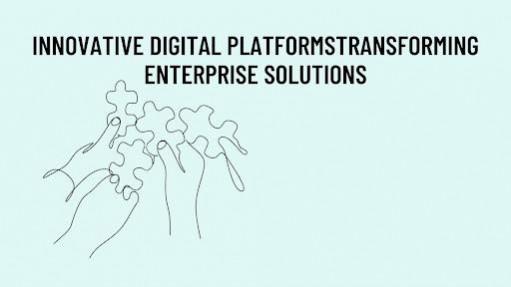Innovative Digital Platforms:Transforming Enterprise Solutions

In his pioneering work, DilipKumar Deverahosahalli Jayaram examines how adaptive digital platforms are reshaping enterprise architecture. Drawing from his extensive experience in digital transformation, he reveals how modular design principles enable organizations to build more flexible and responsive systems. His work offers valuable insights into the ongoing evolution of platform ecosystems and their impact on modern business operations.
The Shift to Modular Architectures
The transition from monolithic to modular architectures has revolutionized enterprise platforms. Traditional systems often struggle with maintenance and scalability, leading to inefficiencies in integration and dependency management. By embracing modular structures, enterprises can now deploy independent, scalable components that significantly enhance operational agility and reduce time-to-market for new features.
Core Attributes of Adaptive Platforms
Adaptive platforms thrive on principles such as loose coupling and high cohesion. These characteristics enable enterprises to streamline deployment, reduce integration complexities, and enhance system resilience. A well-designed platform architecture supports rapid transformation while ensuring the integrity of core functionalities. Through modular design patterns and standardized interfaces, these platforms facilitate seamless component updates and modifications without disrupting the entire system. This architectural approach promotes scalability, enables faster time-to-market for new features, and provides the flexibility needed to respond to changing business requirements while maintaining operational stability and security.
Automation and Intelligent Workflows
Modern digital platforms leverage automation to optimize enterprise workflows. Intelligent automation frameworks enhance operational efficiency by integrating AI-driven decision-making with routine business processes. This fusion of AI and automation accelerates task execution, minimizes manual errors, and drives consistent performance across diverse industry verticals.
Seamless Integration for Scalable Growth
Integration frameworks play a crucial role in enabling platform interoperability. Sophisticated enterprise integration patterns, including service-oriented architectures and asynchronous messaging protocols, facilitate seamless communication between diverse digital components. These frameworks empower businesses to handle high-volume transactions and complex operational workflows efficiently.
Microservices: The Backbone of Modern Platforms
Microservices architecture has emerged as a cornerstone of adaptive digital platforms. By decomposing large applications into smaller, independently deployable services, organizations gain enhanced scalability and maintainability. This approach also enables enterprises to implement updates and new features without disrupting the entire system. Each microservice operates as a self-contained unit with its own data management and business logic, communicating through well-defined APIs. This architectural pattern promotes team autonomy, allows for technology diversity across services, and supports continuous delivery practices. The granular nature of microservices also facilitates more efficient resource allocation and better fault isolation, making systems more resilient and easier to troubleshoot.
Ensuring Performance and Scalability
Scalability and performance optimization are critical to maintaining an enterprise-grade platform. Elastic scaling mechanisms dynamically allocate resources based on real-time demands, ensuring optimal system performance under varying workloads. Additionally, runtime adaptation strategies leverage AI to predict and manage resource allocation efficiently. Advanced monitoring and predictive analytics enhance operational excellence.
Extensibility and Customization for Business Needs
Enterprises demand flexible platforms that can be tailored to specific business requirements. Modern frameworks provide extensibility options that allow organizations to develop custom components without compromising platform stability. This adaptability ensures that platforms remain future-proof and capable of evolving alongside business needs.
Strategic Evolution of Enterprise Platforms
The sustainability of digital platforms depends on structured evolution strategies. Organizations adopting incremental modernization approaches experience reduced technical debt and improved system adaptability. Feature management techniques, such as controlled deployment and rollback mechanisms, further enhance platform reliability.
In Conclusion The innovations discussed by DilipKumar Deverahosahalli Jayaram highlight the transformative impact of modular and adaptive digital platforms in enterprise environments. By integrating automation, intelligent workflows, and scalable architectures, organizations can enhance operational efficiency and foster continuous innovation. As enterprises navigate the complexities of digital transformation, these principles serve as a blueprint for building resilient, future-ready platforms.
